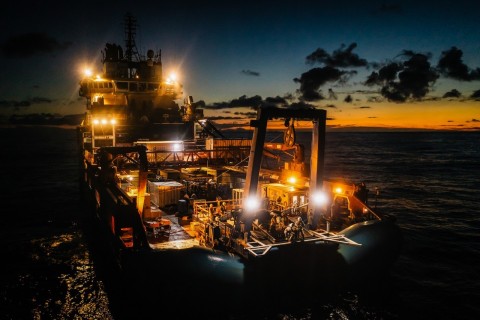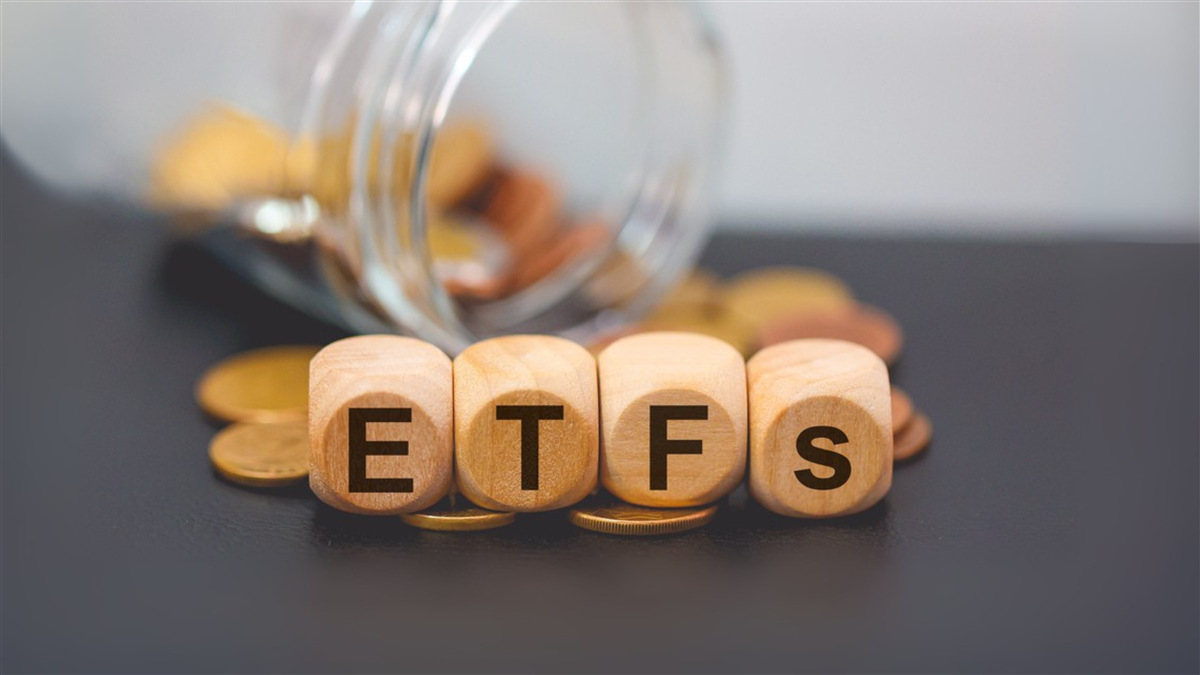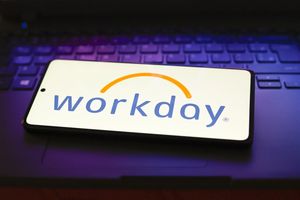- The Metals Company has successfully concluded Environmental Expedition 5C, the latest campaign in its $75 million multi-year deep-sea research program to establish a rigorous environmental baseline and characterize the potential impacts of the Company’s proposed nodule collection operations
- In collaboration with Maersk Supply Services and researchers from the University of Hawaii, Texas A&M University and the Japan Agency for Marine-Earth Science and Technology (JAMSTEC), the Company achieved a world first by successfully sampling pelagic biota at depths of 4,000 meters, marking the first deep MOCNESS net tow in the Eastern Tropical Pacific Ocean
- Facing six-meter swells at times, the team endured significant challenges to successfully complete 100% of the work program on schedule and with an untarnished safety record
The Metals Company, (NASDAQ: TMC) (the “Company” or “TMC”), an explorer of lower-impact battery metals from seafloor polymetallic nodules, today announced the conclusion of its Environmental Expedition 5C, which focused on the biological communities, organic flux and food web structure from the ocean surface to the benthic boundary layer just above the abyssal seafloor. Researchers on board achieved a world-first by conducting the deepest pelagic biota sampling at depths down to 4,000 meters in the Eastern Tropical Pacific. The Company’s fourth environmental research campaign this year, Expedition 5C forms part of its $75 million multi-year deep-sea research program to establish a rigorous environmental baseline and characterize the potential impacts of TMC’s proposed nodule collection operations. These latest insights build upon the baseline dataset collected on the Company’s NORI-D block, sponsored by the Republic of Nauru.
This press release features multimedia. View the full release here: https://www.businesswire.com/news/home/20211108005628/en/

The Metals Company (Photo: Business Wire)
Researchers from the University of Hawaii employed a range of technologies including a 10m2 MOCNESS system (Multiple Opening/Closing Net and Environmental Sensing), comprising a series of nets with varying mesh sizes that open and close at controlled depths in the water column to capture a profile of biological communities at each depth layer. In collaboration with Maersk Supply Services, the team was able to trigger these nets to retrieve biological samples at a depth of 4,000 meters providing a glimpse into the deep-sea communities that may inhabit the dark, high-pressure regions of the Clarion Clipperton Zone (CCZ) where the Company’s nodule collector system test will take place.
“We hear the call for further research into the impact of collecting deep-sea nodules and since 2011 we have been doing just that,” said Gerard Barron, Chairman and CEO of The Metals Company. “I am immensely proud of the contribution we are making to society’s knowledge of the deep-sea and that, since COVID first impacted us all in early 2020, we have been able to complete nine environmental research campaigns in collaboration with the world’s leading ocean research institutions.”
Alongside the MOCNESS system, researchers leveraged hydrographic rosettes to determine the physical properties of the water column, generating insights into local salinity, temperature, oxygen, turbidity, nutrient profiles and trace metal content, which will help characterise the inter-relationships between the physical environment from the surface to the abyssal depths, and the animals that live there.
Facing rough seas with swells as high as six meters, both the logistics and research teams overcame significant challenges to complete the scope of the work program on time and without any accidents or incidents. Mobilization of Environmental Expedition 5E, the company’s fifth and final research campaign of 2021, has now commenced and is expected to be completed before the new year. Expedition 5E will mark the completion of the offshore campaigns that will form the basis of the Company’s environmental baseline work.
Planet’s Largest Known Source of Battery Metals
As countries invest in large-scale clean energy transition programs and begin to phase out internal combustion engines, hundreds of millions of tons of critical battery metals including nickel, cobalt, copper and manganese will be needed to decarbonize the world’s energy and transport systems. In the U.S., the Biden Administration recently elevated nickel to ‘critical’ status — singling it out as one of three battery metals deemed ‘most critical’ to US interests.
TMC’s NORI-D nodule project – recently ranked as the #1 nickel project in the world by Mining.com — is the first in the Company’s project development pipeline. In January, The Metals Company published an upward revision to the nodule resource converted from inferred to indicated category within the NORI-D area held by its subsidiary, Nauru Ocean Resources Inc., (NORI), improving resource confidence from inferred to indicated status. Resource tonnage was increased by 7% over the reported area from 320Mt inferred to 341Mt indicated. The estimated in situ resource on the seafloor in the exploration contract areas held by TMC’s subsidiaries is sufficient for 280 million electric vehicles – roughly the entire U.S. passenger vehicle fleet. The development of this resource offers an abundant, low-cost supply of critical raw materials for EV batteries and wiring with an expected lower lifecycle ESG impact than conventional land-based mining.
About The Metals Company
TMC the metals company Inc. (The Metals Company) is an explorer of lower-impact battery metals from seafloor polymetallic nodules, on a dual mission: (1) supply metals for the clean energy transition with the least possible negative environmental and social impact and (2) accelerate the transition to a circular metal economy. The company through its subsidiaries holds exploration rights to three polymetallic nodule contract areas in the Clarion Clipperton Zone of the Pacific Ocean regulated by the International Seabed Authority and sponsored by the governments of Nauru, Kiribati and the Kingdom of Tonga. More information is available at www.metals.co.
Forward Looking Statements
Certain statements made in this press release are not historical facts but are forward-looking statements for purposes of the safe harbor provisions under The Private Securities Litigation Reform Act of 1995. Forward-looking statements generally are accompanied by words such as “believe,” “may,” “will,” “estimate,” “continue,” “anticipate,” “intend,” “expect,” “should,” “would,” “plan,” “predict,” “potential,” “seem,” “seek,” “future,” “outlook” and similar expressions that predict or indicate future events or trends or that are not statements of historical matters. The forward-looking statements contained in this press release include, without limitation, TMC’s expectations with respect to the success of its research campaign Environmental Expedition 5C, the results or outcomes of the campaigns and expeditions and the data generated during Environmental Expedition 5C respectively. These forward-looking statements involve significant risks and uncertainties that could cause the actual results to differ materially from those discussed in the forward-looking statements. Most of these factors are outside TMC’s control and are difficult to predict. Factors that may cause such differences include, but are not limited to: regulatory uncertainties and the impact of government regulation and political instability on TMC’s resource activities; changes to any of the laws, rules, regulations or policies to which TMC is subject; the impact of extensive and costly environmental requirements on TMC’s operations; environmental liabilities; the impact of polymetallic nodule collection on biodiversity in the CCZ and recovery rates of impacted ecosystems; TMC’s ability to develop minerals in sufficient grade or quantities to justify commercial operations; the lack of development of seafloor polymetallic nodule deposit; uncertainty in the estimates for mineral resource calculations from certain contract areas and for the grade and quality of polymetallic nodule deposits; risks associated with natural hazards; uncertainty with respect to the specialized treatment and processing of polymetallic nodules that TMC may recover; risks associated with collective, development and processing operations; fluctuations in transportation costs; testing and manufacturing of equipment; risks associated with TMC’s limited operating history; the impact of the COVID-19 pandemic; risks associated with TMC’s intellectual property; and other risks and uncertainties indicated from time to time in the final prospectus and definitive proxy statement, dated and filed with the SEC on August 12, 2021 relating to the recently completed business combination, including those under “Risk Factors” therein, and in TMC’s other future filings with the SEC. TMC cautions that the foregoing list of factors is not exclusive. TMC cautions readers not to place undue reliance upon any forward-looking statements, which speak only as of the date made. TMC does not undertake or accept any obligation or undertaking to release publicly any updates or revisions to any forward-looking statements to reflect any change in its expectations or any change in events, conditions, or circumstances on which any such statement is based except as required by law.
View source version on businesswire.com: https://www.businesswire.com/news/home/20211108005628/en/
Contacts
Media | media@metals.co
Investors | investors@metals.co
Dan Gagnier | Gagnier Communications | tmc@gagnierfc.com






